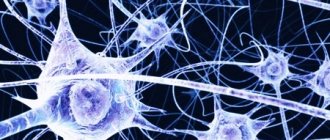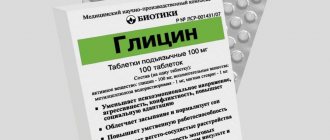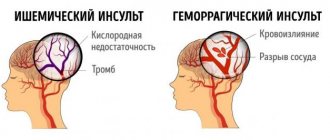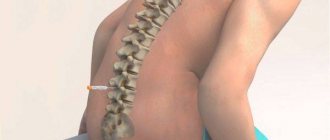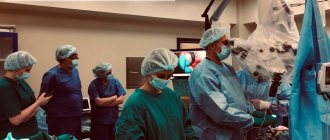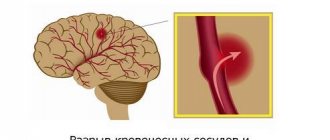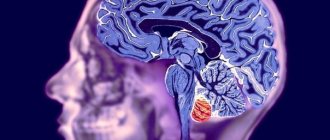General anesthesia is a serious burden on the body, which specialists try to avoid whenever possible. In some cases, spinal anesthesia is used for surgical operations. If all stages of the manipulation are performed correctly and the basic rules are followed, the risks of developing side effects are minimal. Particular attention is paid to preparation for the procedure. Still, headaches after spinal anesthesia are not uncommon. In this case, numerous methods have been developed to alleviate the condition of the victim. The main thing is not to act on your own if you have a headache after medical anesthesia. The fight against the symptom should be carried out under the supervision of a doctor.
What is spinal anesthesia
Spinal anesthesia is a type of local anesthesia. Its purpose is to turn off the nerve endings that innervate the lower half of the body. This occurs due to a disruption in the exchange of signals between the brain and spinal cord. Painkillers are injected directly into the spinal space of the spine. A small volume of cerebrospinal fluid is first removed from it so that pressure does not increase. To manipulate and puncture the dura mater, a specialist uses a special needle. He inserts it into the area between the vertebrae at the junction of the lower back and the back.
The procedure is performed or supervised by an anesthesiologist. If everything is done correctly, the approach will not only neutralize pain, but will also reduce the likelihood of bleeding during the operation. Due to these properties, local administration of an anesthetic is indicated for caesarean section, gynecological and urological interventions, and procedures in the back, pelvis, and lower extremities. If the patient has a headache after post-spinal anesthesia, this indicates a violation of the technique of performing the manipulation.
Nature of pain
This feeling of a headache after anesthesia worries most people who have undergone surgery. In most cases, severe headaches are accompanied by nausea and dizziness. Unpleasant symptoms intensify if a person performs intense activities or changes body position. The nature of the headache after surgery is most often aching.
An unpleasant sensation spreads over the surface of the head, its right or left parts, or concentrates in the area of the temples, forehead or crown of the head. The intensity of the pain increases if a person makes sudden movements, tilts his head, hears a loud sound or sees a bright light. Constant aching headaches subsequently provoke the development of migraines, which are accompanied by such unpleasant symptoms as constant nausea, vomiting, and the appearance of apathetic state.
It is almost impossible to “relieve” migraines with medications (antispasmodics), so attacks of pain last a long time, causing a person psychological and physical discomfort. The type of anesthesia used affects the nature of the pain in the head, which manifests itself in different ways in a person:
- Spinal anesthesia. When using this type of anesthesia, the patient remains conscious, the sensitivity of the body is preserved to a greater extent. Anesthesia is carried out as follows: using a special needle, an anesthetic solution is injected into the space between the spinal roots. The insertion of a needle helps to pierce the membrane and cerebrospinal fluid begins to leak through the resulting hole, all this provokes a decrease in the pressure inside the brain. This process is the cause of headaches, since the spinal cord and brain are connected to each other.
- Modern needles for spinal anesthesia have a small diameter, so the puncture of the membrane is smaller, which means that headaches after anesthesia will be mild, since a larger puncture provokes severe pain. The unpleasant consequences of spinal anesthesia can be minimized if during the administration of the anesthetic solution the patient is in a horizontal body position; in this case, the “leakage” of cerebrospinal fluid is reduced.
- General anesthesia. When using general anesthesia, the patient loses sensation throughout the body. During the operation the person is unconscious. It is possible to introduce an anesthetic solution into the patient’s body in different ways, but the effect of the anesthetic on the brain always remains the same. The use of general anesthesia causes cerebral vasospasm. A secondary cause of vascular spasm may be intoxication of the internal systems of the body with the anesthetics used. After general anesthesia, the patient experiences severe and prolonged headaches, often accompanied by dizziness and a decrease in blood pressure parameters.
Causes of headache after spinal anesthesia
Cephalgia as a result of the use of local anesthesia appears within a few hours after surgery or the next day. The intensity of pain varies. The sensations are usually concentrated in the back of the head, can radiate to the temples or spread throughout the entire skull. The type of symptom is pulsating, bursting or squeezing. It intensifies when turning the head and in the evening.
Causes of headache after spinal anesthesia:
- removal of more than 4 ml of cerebrospinal fluid, leading to a drop in pressure;
- injection of more than 4 ml of anesthetic, leading to an increase in pressure;
- violation of the sterility of the instruments and materials used;
- performing manipulations without taking into account the structural features of the patient’s spine - scoliosis, osteochondrosis, changes in anatomy as a result of injuries;
- repeating the manipulation and getting the needle into old scars from previous procedures;
- the use of a needle with an incorrectly selected type of cut, which disrupts the outflow of cerebrospinal fluid;
- the patient’s motor activity during the procedure – head shaking causes changes in intracranial pressure;
- incorrect position of the patient during manipulation or prolonged stay in an anatomically uncomfortable position;
- a history of encephalitis, meningitis and other diseases leading to the formation of adhesions - these formations disrupt the flow of cerebrospinal fluid;
- medical errors - inserting a needle at the wrong level, getting the anesthetic into the epidural space, touching the spinal cord;
- performing manipulation against the background of contraindications.
The situation when a person has a headache after anesthesia is observed in 30% of cases. This is not always the consequence of a medical error. If the sensations are mild and go away on their own after a couple of days, there is no reason to worry. In 1% of cases, the symptom only intensifies over time and causes significant discomfort to the patient. It is necessary to combat the negative consequences of spinal anesthesia under the supervision of a doctor.
How long does a headache last after anesthesia?
Normally, cephalalgia is not observed during the use of local anesthetics, but with increased sensitivity of the body it is not excluded.
How long the symptom will persist depends on the individual characteristics of the body and the reasons for its appearance. Often the pain goes away within 1-2 days on its own and does not require the use of medications. In other cases, the length of time the symptom persists depends on the quality of care provided by specialists.
Anesthesia and anesthesia
We consider it absolutely necessary to inform patients as much as possible about everything that awaits them during and after surgery.
It is very important that the patient is able to optimally prepare for the rather complex ordeal of surgery. It’s not for nothing that they say: forewarned is forearmed. Many years of experience show that only patients who are well informed in advance undergo surgery easily, recover quickly and return to active life. Will I be in pain during the operation?
Such a question for modern medicine sounds somewhat naive, because back in the second half of the 19th century, pain during surgery was over. Since then, anesthesiology (a branch of medical science that studies various types of anesthesia and anesthesia) has come a tremendous way in its development and today has everything necessary to ensure that any, even the most complex and extensive operation is painless, safe and comfortable for the patient. However, even the most knowledgeable patient sometimes worries and asks a similar question: will it hurt me during and immediately after the operation, when the anesthesia wears off? The answer in this case may sound like this: if the anesthesiologist (a specialist in pain relief and monitoring the patient’s condition during surgery and in the immediate postoperative period) is a high-class specialist and performs his work professionally, pain during the operation and after the end of the surgical anesthesia is not will.
What types of pain relief exist in modern medicine?
What types of anesthesia are used for which operations? Pain relief or anesthesia can be general or local. For minor operations (in urology these are many operations on the penis and scrotal organs, in gynecology - minor interventions on the labia, vagina, external urethral opening, etc.), local anesthesia . It consists of introducing a special substance, a local anesthetic (lidocaine, xylocaine, marcaine, etc.), using a syringe into the area of the operation being performed or into the area of the peripheral nerves that control the pain sensitivity of the operation area, which temporarily turns off the pain sensitivity. Local anesthesia can be infiltration (injection of an anesthetic directly into the area of incision and surgical manipulations), conduction (injection of an anesthetic into the area of large nerves that provide pain sensitivity in the operation area, but are themselves located outside this zone) and combined. During an operation under local anesthesia, the patient is conscious, he sees and hears everything that happens in the operating room, he can also feel all the touches of the surgeons (not pain), and sometimes experience minor pain. General anesthesia or anesthesia (the word anesthesia means only general anesthesia with the switching off of consciousness and pain sensitivity at the level of the brain, the colloquial expression “general anesthesia” is meaningless) consists of temporarily switching off the central zones of pain sensitivity and the transmission of pain impulses in the brain or spinal cord . Anesthesia can be intravenous or intubation. During intravenous anesthesia, a drug is injected into the patient's vein, which causes the pain sensitivity centers of the brain to be turned off and at the same time turns off the patient's consciousness, maintaining, as a rule, spontaneous breathing. Intravenous anesthesia is used for minor and medium-sized operations when local anesthesia cannot provide adequate pain relief. This type of anesthesia is also used at the request of the patient, when he would not like to be conscious during the operation, see, hear and feel everything that happens in the operating room. Intubation anesthesia consists of a preliminary temporary shutdown at the level of the brain of the patient’s central pain sensitivity and consciousness, temporary paralysis of the muscles, followed by intubation (insertion of a breathing tube into the trachea) and artificial ventilation of the lungs (artificial respiration) using special breathing equipment for the entire duration of the operation. This type of anesthesia is used for extensive operations on the abdominal and thoracic cavities, pelvic organs and retroperitoneal space (abdominal surgery). Such operations require that the patient's muscles are relaxed and involuntary or voluntary movements do not interfere with the surgeon and are completely excluded. Intubation anesthesia can also be used in cases where intravenous anesthesia or local anesthesia may be insufficient to provide adequate pain relief and control of the patient’s condition during medium-sized operations, as well as for medical reasons related to the presence of certain diseases of the person being operated on. A special place among the methods of general anesthesia is occupied by spinal (epidural) anesthesia (Fig. 1), which consists of introducing local anesthetics of varying durations of action (lidocaine, xylocaine, marcaine, etc.) into the spinal canal, which leads to temporary shutdown of pain and tactile sensitivity , as well as motor function below the injection site.
Rice. 1 Performing spinal anesthesia by an anesthesiologist.
Spinal anesthesia is usually supplemented with so-called intravenous sedation (medication sleep) and the patient sleeps during the operation.
This type of anesthesia is used for various operations on the pelvic organs and external genitalia. What are the characteristics of the patient’s recovery from various types of anesthesia and the immediate postoperative period?
What needs to be done to speed up the patient’s recovery and recovery after surgery? Very often, patients wonder what will happen to them and how they will feel when the anesthesia wears off? Of course, this depends on the type of anesthesia used, and on the type and extent of the operation, as well as on the general condition and individual characteristics of the patient’s pain sensitivity. After the cessation of local anesthesia , after minor operations, patients, as a rule, experience slight pain in the area of the surgical wound (the site of the surgical injury cannot help but hurt). To relieve these pains, it is usually enough to take a non-narcotic analgesic (painkiller) such as analgin, ibuprofen or diclofenac (Voltaren). If the effect of these drugs is not sufficient, more powerful non-narcotic analgesics are used - ketorol, tramadol, ketonal, etc. Typically, postoperative pain during minor and medium-sized operations lasts no more than 1 to 2 days. If they last longer, this should be brought to the attention of your doctor. After intravenous and intubation anesthesia , patients feel as if they were after a good and deep sleep, sometimes they remember bizarre dreams, occasionally experience a headache, note nausea, and in isolated cases vomiting. After intubation anesthesia, there is a soreness and discomfort in the throat, which is associated with the presence of a breathing tube there during the operation. Some medications used for these types of anesthesia can cause breathing problems. In this regard, patients are in the first hours after surgery under close supervision of medical personnel of the anesthesiological service (anesthesiologist, nurse anesthetist). Only when there is absolute confidence that there can be no breathing problems, the patient is transferred to a regular ward. After medium-sized, and especially after large abdominal operations, the patient may experience fairly intense pain for several days. In these cases, postoperative pain relief becomes a critical part of the patient's treatment in the first days after surgery. There are several postoperative pain relief regimens that are selected strictly individually and guarantee the patient’s comfortable condition in the first days after surgery. In the early postoperative period after major abdominal operations, in order to speed up the patient’s recovery and recovery, three main problems . The first problem is pulmonary rehabilitation. It is often difficult for the patient to breathe deeply and move in bed. This can lead to pulmonary congestion and even post-operative pneumonia (pneumonia). To avoid this, the patient is placed with the head end slightly elevated, he is recommended to move in bed and regularly (every 1 - 2 hours) do breathing exercises (inhaling with resistance using a special spirometer or exhaling into a jar of water). The second common postoperative problem associated with prolonged lying down and lack of muscle activity is stagnation of blood in the veins of the legs , the formation of blood clots, which can travel through the veins to the heart and further into the pulmonary artery (thromboembolism) and cause sudden death. To prevent this formidable complication, the patient is given drugs that reduce blood clotting, and constant compression (squeezing) of the legs is also applied using an elastic bandage or, which is much better, simulating natural muscle activity, variable compression using a cuff of a special device. And finally, the third most important postoperative problem is rehabilitation of the digestive system .
It is known that after major operations, especially on the abdominal and pelvic organs, there is a temporary decrease in intestinal peristalsis (contractility), which, as a rule, recovers on its own 2–3 days after surgery. To speed up this process, patients are advised to gradually return to their normal diet. On the first day after the operation, they are only allowed to drink water, on the second day they are allowed to consume liquid nutritious foods (jelly, jellies, broths), from the third day they supplement the diet with pureed boiled vegetables and minced lean meat (young beef). The solution to all three main problems of the postoperative period is facilitated by early activation of the patient. We try to ensure that by the end of the first day after extensive abdominal operations, the patient sits in bed or in a chair, and by the end of the second day he gets up, washes himself and begins to walk around the ward. On the 3rd - 4th day after major abdominal operations, the vast majority of our patients begin to walk along the corridor of the department and prepare for discharge from the hospital. Why is it important to be discharged from the hospital as early as possible?
In the hospitals that we inherited from the Soviet healthcare system, even today postoperative patient care is often organized in such a way that patients remain in the hospital after major operations for one to several weeks. Many people mistakenly believe that the longer a patient remains in the hospital after surgery, the more “fully” he will recover. Studies conducted in leading Western countries have shown that everything is happening quite the opposite. It has been proven that the longer the patient's postoperative stay in the hospital continues, the more often infectious complications (wound suppuration) caused by the so-called hospital infection occur. It is worth noting that the state of affairs with hospital-acquired infections in Russian hospitals clearly leaves much to be desired, so there is no point in staying in them. Another important argument in favor of early discharge from the hospital lies in the field of human psychology and is expressed by the proverb - houses and walls help. In familiar and comfortable home conditions, recovery occurs much faster. A necessary condition for early discharge from the hospital is the presence of close people who could provide the patient with the minimum necessary care at home. If necessary, medical personnel can come to the home of postoperative patients at the Andros Clinic.
It is important to know that you should reduce or abstain from smoking in the postoperative period. This will significantly speed up the healing of the postoperative wound.
DEAR PATIENTS! REMEMBER THAT QUALIFIED ANESTHETIC CARE AND COMPLETE POST-OPERATIVE REHABILITATION ARE ESSENTIAL COMPONENTS OF SURGICAL TREATMENT. ANDROS CLINIC HAS ON ITS STAFF A HIGHLY QUALIFIED ANESTHESIOLOGIST CAPABLE OF CONDUCTING ANESTHETICS OF ANY COMPLEXITY AND PROVIDING HIGHLY PROFESSIONAL POSTOPERATIVE CARE AND REHABILITATION EVEN IN THE MOST COMPLEX CASES. THE CLINIC USES THE MOST PROGRESSIVE METHODS OF POSTOPERATIVE PATIENT MANAGEMENT, EARLY ACTIVATION OF PATIENTS, AND QUICK DISCHARGE FROM THE HOSPITAL. AS A RESULT, PATIENTS EVEN AFTER THE MOST COMPLEX OPERATIONS (RADICAL PROSTATECTOMY FOR PROSTATE CANCER) ARE DISCHARGED FROM THE HOSPITAL FOR 4 - 5 DAYS AND 3 - 4 WEEKS AFTER THE OPERATION RETURN TO ACTIVE WORK TE.
How to prevent headaches after anesthesia
The degree of risk of developing complications largely depends on the qualifications of the anesthesiologist and other medical personnel. High-quality materials, specialized training and adherence to the technique of performing the procedure reduce the likelihood of adverse reactions to a minimum.
An equally important point is compliance with all recommendations by the patient himself.
Methods for preventing headaches after spinal anesthesia:
- special preparation for the procedure - if possible, 7-8 hours before the procedure, you should stop eating and smoking, and limit the amount of liquid you drink. The patient benefits from adequate sleep and walks in the fresh air;
- correct positioning of the body - to carry out the manipulation, a person can be laid on his side, but it is better if he is in a sitting position with his back tilted forward as much as possible. Another mandatory requirement is patient immobility;
- the use of specialized needles - the tool should be small with a “pencil” type of sharpening. The hole is minimal; liquor does not flow out through it;
- observance of a special regime after the session - bed rest is recommended for those who have undergone spinal anesthesia. It is necessary to ensure that the patient’s head does not hang down or rise. Additionally, it is recommended to drink at least 2-3 liters of liquid.
The appearance of a headache after anesthesia while observing the above points may indicate the presence of hidden pathologies in a person or a medical error. In any case, the fight against manifestation should be specialized. Attempts to limit yourself to taking medications alone do not always give the desired result.
Why does postoperative pain occur?
Postoperative pain according to ICD-10 (International Classification of Diseases) refers to unspecified types of pain and does not carry any signaling information for either the patient or the doctor, since the causes and mechanisms of its occurrence are clear. Therefore, modern principles of patient management after surgery provide for maximum relief from unpleasant pain. Moreover, pain has a negative impact not only on healing, but also on vital processes in the body: the functioning of the cardiovascular, respiratory, digestive, central nervous systems, as well as blood clotting4.
The formation of painful sensations is ensured by a multi-level reaction that connects the immediate area of damage (wound surface) and the central nervous system. It begins with mechanical stimuli in the area of the incision and the release of biologically active substances (prostaglandins, bradykinins and others)4, and ends with information processing in the cerebral cortex and the connection of emotional and psychological components.
Pain syndrome develops as a result of the emergence of areas of increased pain sensitivity (hyperalgesia). Primary hyperalgesia is associated directly with damage and forms near the wound. The area of secondary hyperalgesia covers a larger area and occurs later, over the next 12-18 hours4, as it is associated with stimulation of other types of receptors. It is she who is responsible for the preservation and intensification of pain on the second or third day after surgery, and subsequently for the development of chronic pain syndrome7.
Up to contents
How to relieve headaches after surgery
To eliminate the symptom, you may need to take NSAIDs. With its weak and moderate severity, you can limit yourself to Diclofenac. Excruciating pain is relieved with Ketorolac or Ketorol. If these drugs do not help, the use of narcotic analgesics, for example, Omnopona, is indicated. With low blood pressure, intravenous administration of plasma expanders may be necessary. Treatment of headaches after spinal anesthesia should be carried out under the supervision of professionals. Even the use of traditional medicine and physiotherapeutic approaches must be agreed upon with the attending physician.
Epidural patches
The lack of effect when taking medications for cephalalgia after spinal anesthesia is an indication for a blood patch. The manipulation is performed using epidural anesthesia. The specialist draws some blood from the patient’s vein and injects it in the same way as an anesthetic during spinal anesthesia itself. The injected blood coagulates and clogs the hole formed by the puncture. Biological material is not rejected by the human body and does not cause any discomfort. The resulting natural seal prevents further leakage of fluid into the epidural space and the patient’s condition returns to normal.
Within 24 hours after the session, the patient should feel relief. Otherwise, the procedure is repeated and in this case its success is almost 100%. Fever is a contraindication to manipulation. Complications following an epidural blood patch are uncommon. This may include pain in the lumbar region, tissue infection, or bleeding. If the procedure is performed incorrectly, there is a risk of impaired motor functions of the lower body.
Introduction of saline solution
To combat headaches after anesthesia, saline solution is often used. In this case, the manipulation completely repeats the steps necessary to install an epidural patch. The advantage of this approach is that the product used in this case is sterile. This reduces the risk of infection to a minimum. The disadvantage of this option is the low density and increased absorbency of the composition. As a result, the pressure normalizes more slowly and the positive effect occurs later. It is also important to remember that the saline solution is administered on the same day as the anesthesia.
Aromatherapy
Inhalation of essential oils does not have a direct effect on the cause of headaches. But they relax, distract, relieve muscle tension, and help normalize blood pressure. Incense sticks and lamps work best for therapeutic purposes. To combat cephalalgia, you can use different oils, but mint, lavender and chamomile have increased effectiveness. The approach cannot be the only method of dealing with the symptom. It should complement the main therapy.
Compresses
You can fight headaches with therapeutic cold. Decoctions of mint, oregano, hops, and sage are suitable for this. First, a healing liquid is prepared from the listed ingredients according to basic recipes. It is then poured into ice cube trays and frozen. All that remains is to remove the cubes, wrap them in a towel and apply them to the part of the head in which the unpleasant sensations are concentrated.
Before going to bed, you can make a potato compress. You need to take a couple of raw, peeled tubers and grate them. Do not drain the liquid! Add a quarter glass of milk to the mixture, stir and leave at room temperature for half an hour. Strain out the thick part and set aside separately. Take a clean cloth, soak it in the resulting liquid and wring it out. Place the potato mixture on the workpiece in a dense layer. Place the resulting compress on the problematic part of the head, bandage it and put on a warm hat. Hold it until the pain goes away or at least weakens.
Medicinal herbs
Headaches after anesthesia are well relieved with herbal decoctions taken orally. Hawthorn fruits, mint, raspberry and strawberry leaves have an analgesic effect. Chamomile and lemon balm relieve stress and improve sleep. The listed components can be brewed separately or together. They are drunk in the form of tea, decoction or infusion.
Causes
Headache may occur after epidural anesthesia, as well as after general anesthesia. Anesthesiologists claim that painful sensations can accompany the patient for 14 days after using anesthesia.
The causes of pain in the postoperative period are:
- side effect of using anesthetics;
- increased sensitivity to migraine pain;
- lack of fluid in the patient’s body;
- low body weight of the patient;
- endocrine diseases;
- stress;
- decrease in blood pressure;
- age-related changes.
Depending on the cause of the headaches, accompanying symptoms may vary. For example, when using spinal anesthesia, headache will be accompanied by apathy and loss of appetite if the patient is below normal weight. If there are endocrine diseases after anesthesia, together with migraine, the patient may develop an exacerbation of the underlying pathology, etc.
